<- Homepage: Kea: our threatened mountain parrot
Photo diary and Reading diary
Photo Diary
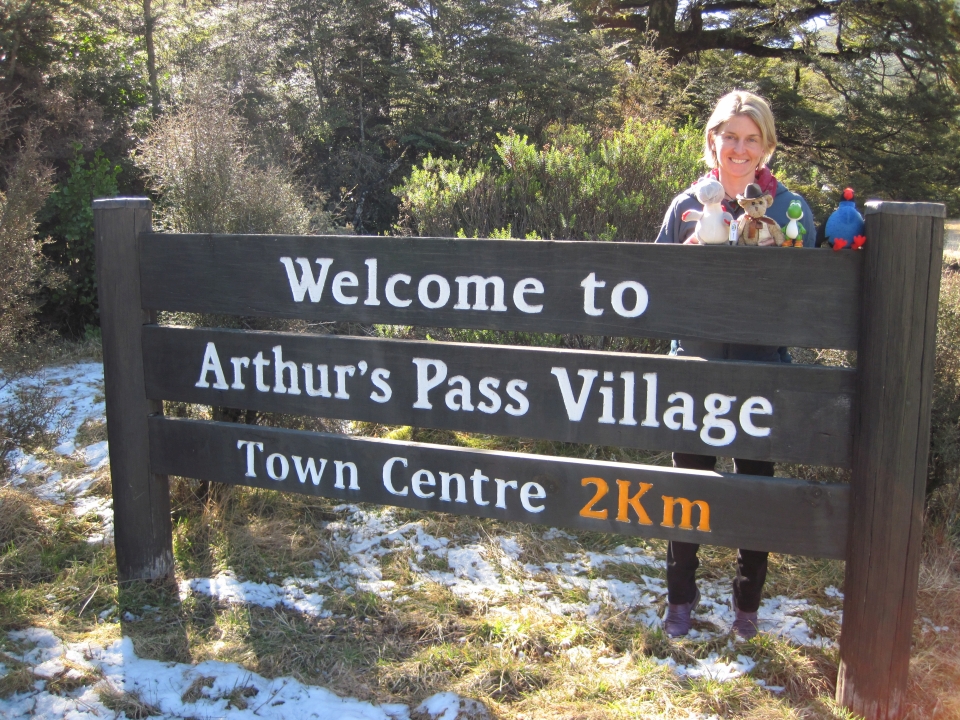
Welcome to kea country and Arthur's Pass alpine village; your home for the week.
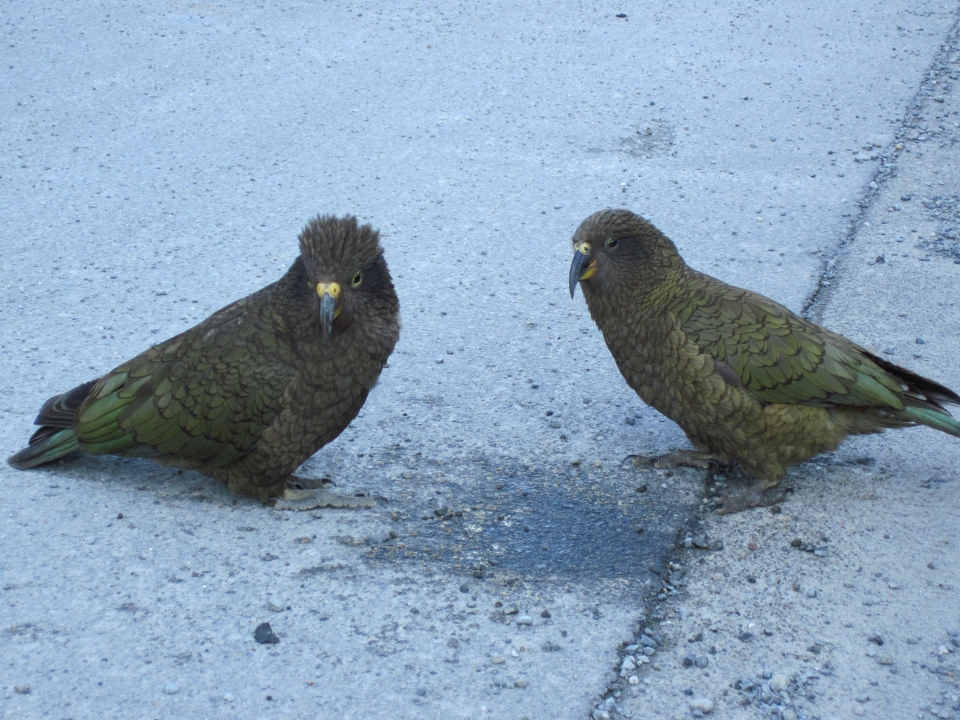
Some curious kea find a tasty puddle of leftover food in the carpark. Why is it important not to feed kea?
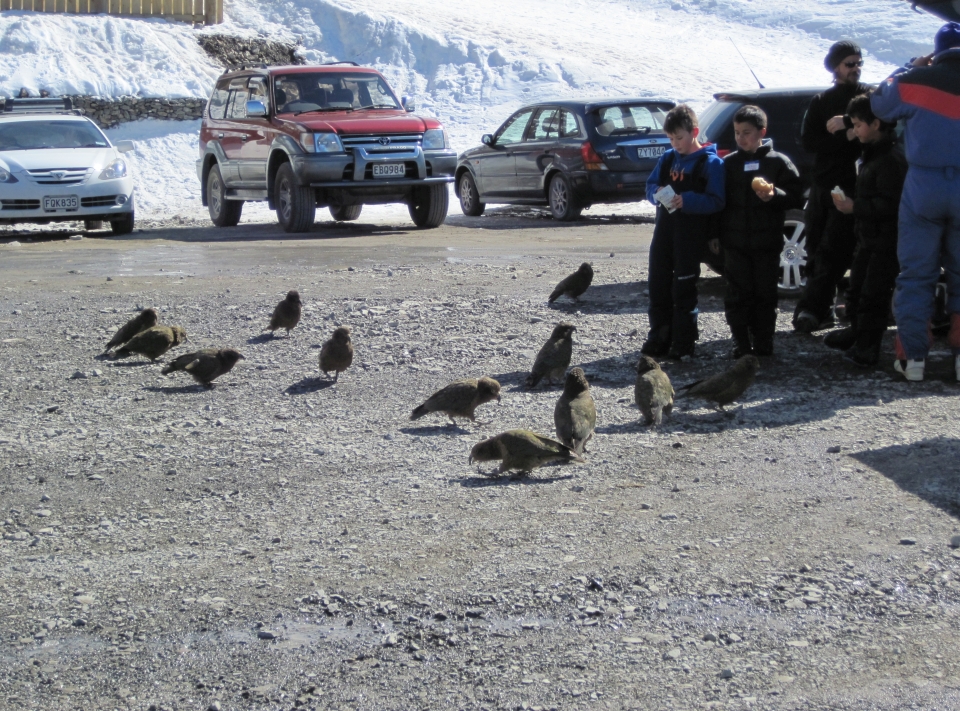
A group of curious kea hang around the Porter Heights ski field car park. How many kea can you see?
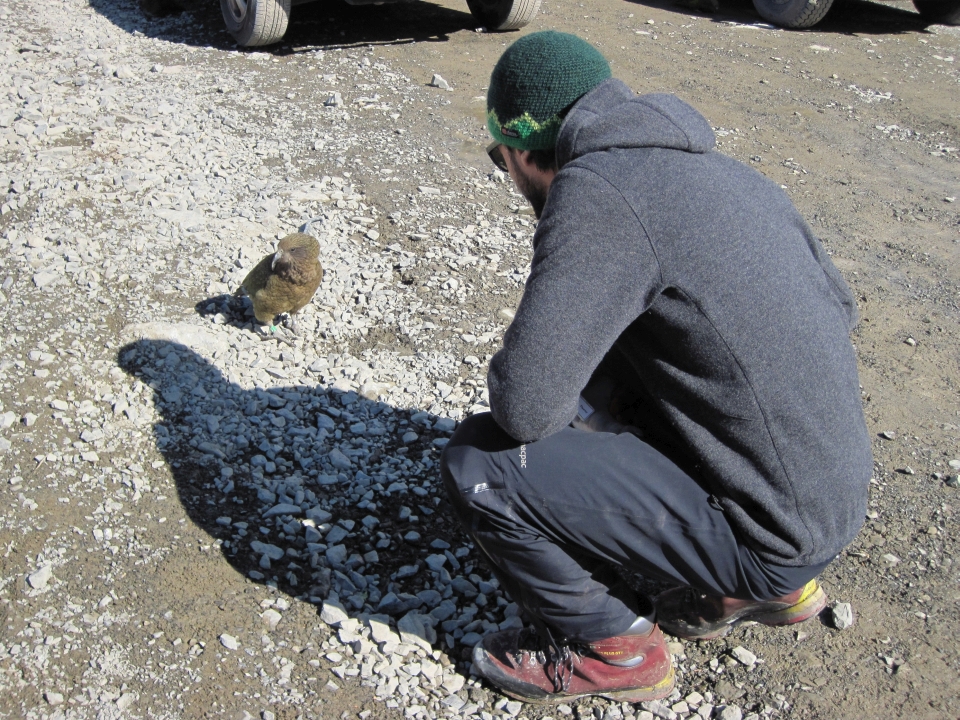
Liam has a close encounter with a curious kea.
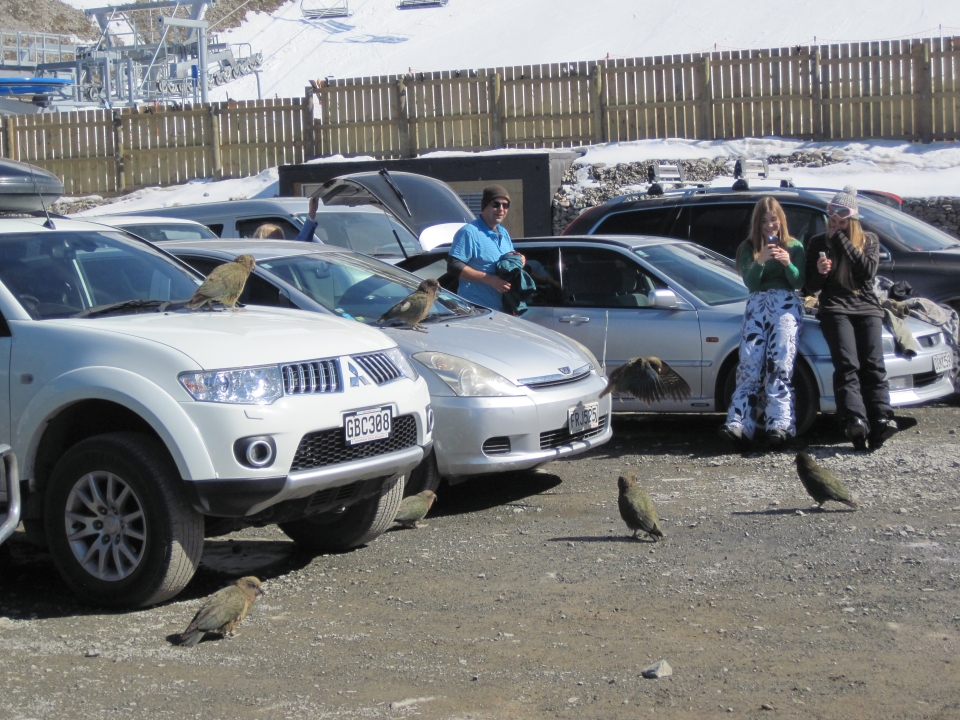
Keas love to investigate new items in their environment. What damage can a kea cause to cars?
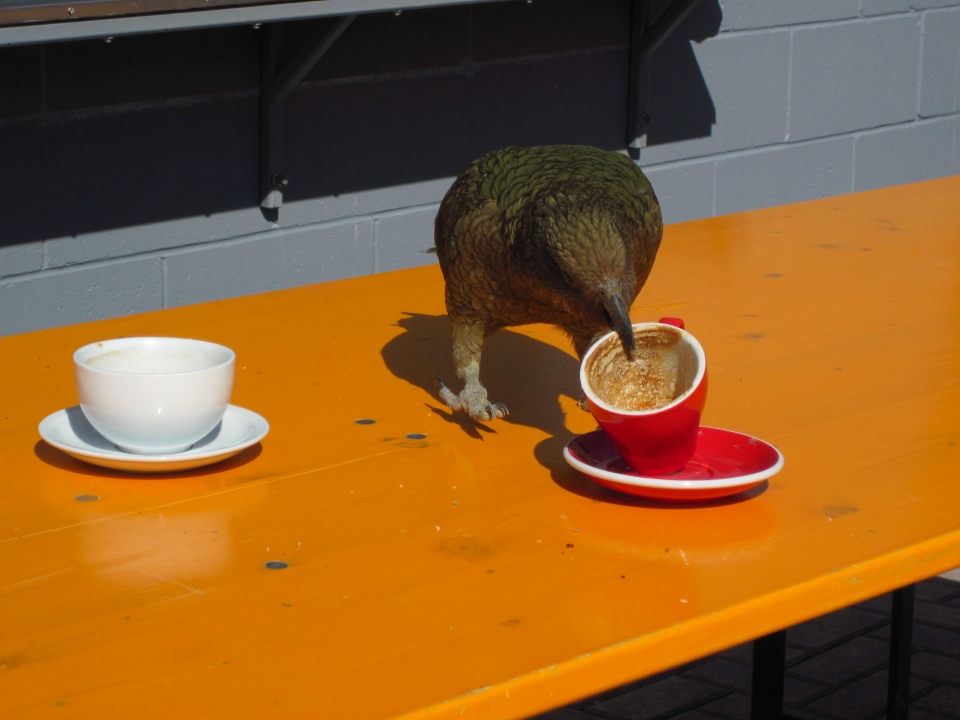
A cheeky kea tries to steal a coffee mug. Why is it important not to feed kea?

Shelley talks with Uli about how the ski field works to try and protect kea and ski field porperty.
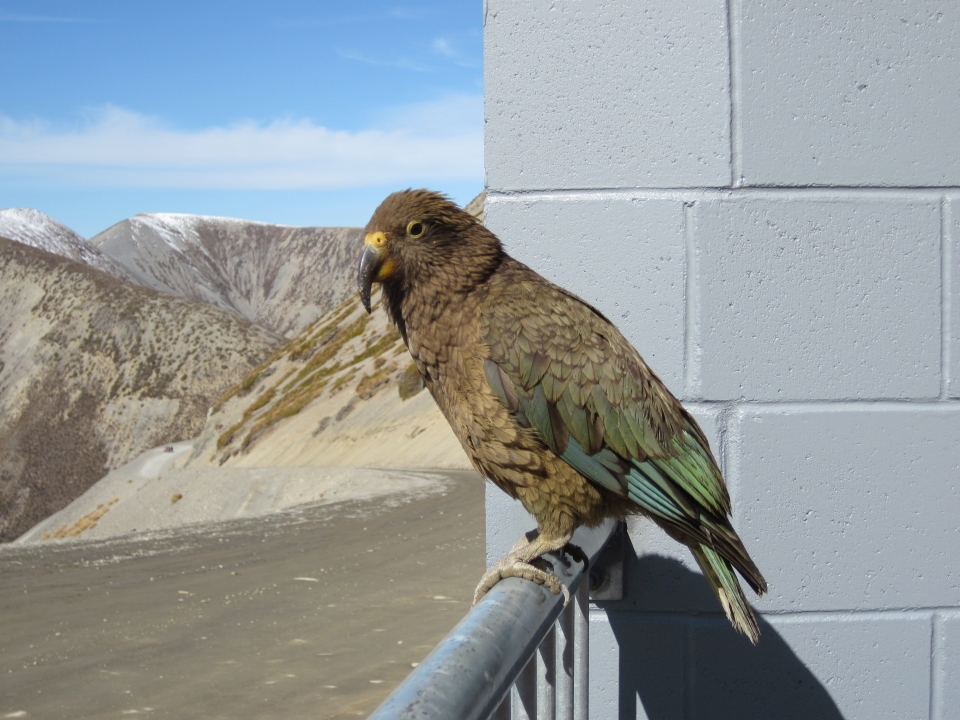
A young kea looks at what is happening outside the ski lodge. How can you tell that this is a young bird?
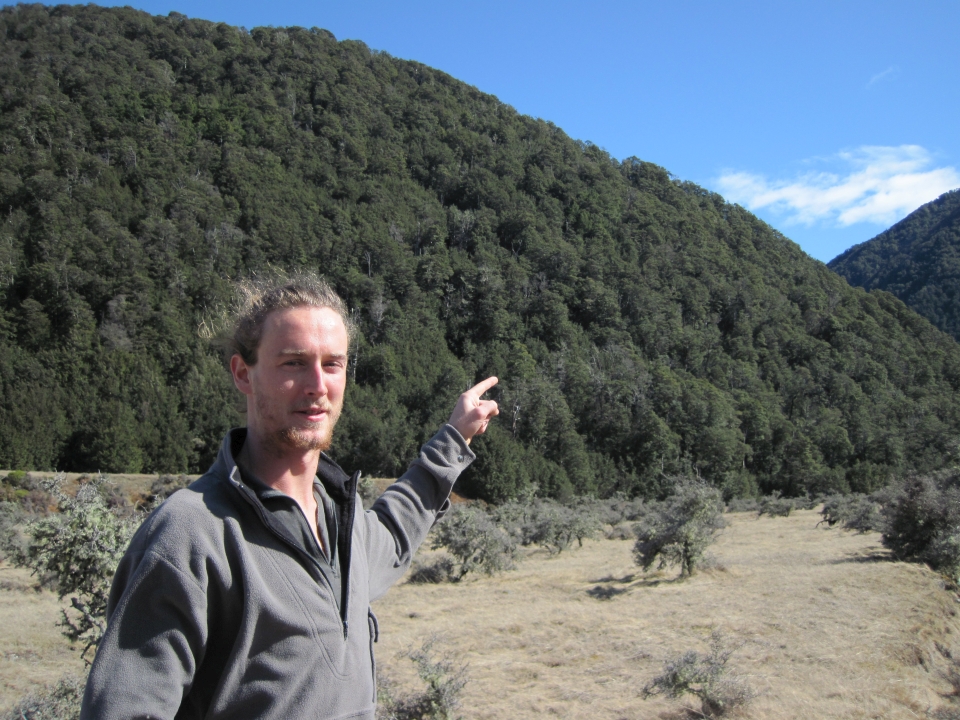
Tom points to where a kea nest site is. Where do kea like to make their nests?
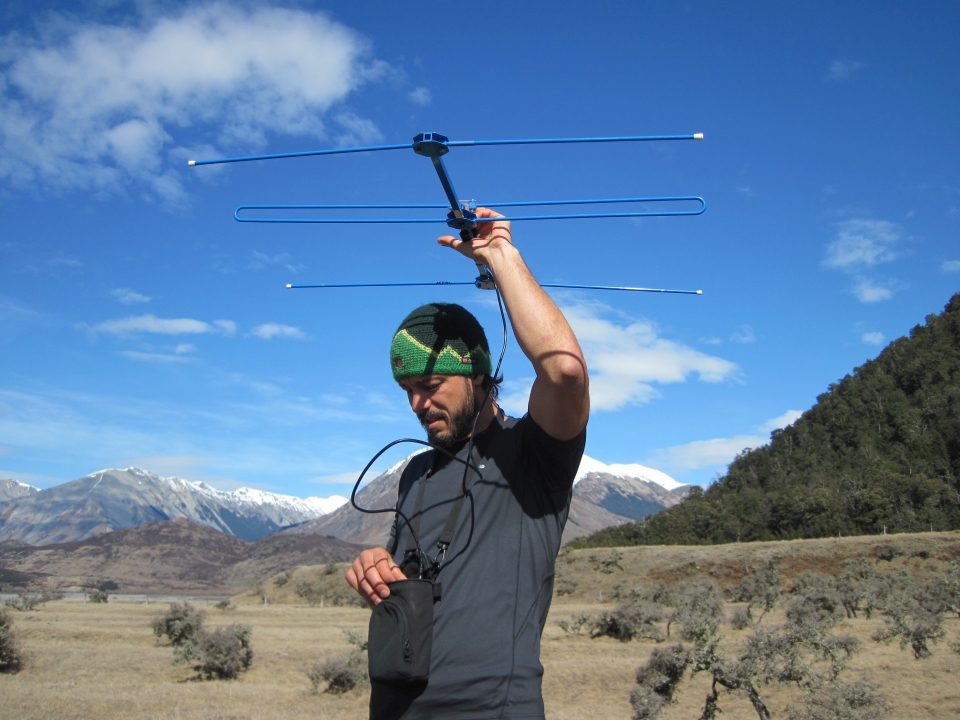
Liam uses an aerial and receiver to track kea that have been fitted with a transmitter.
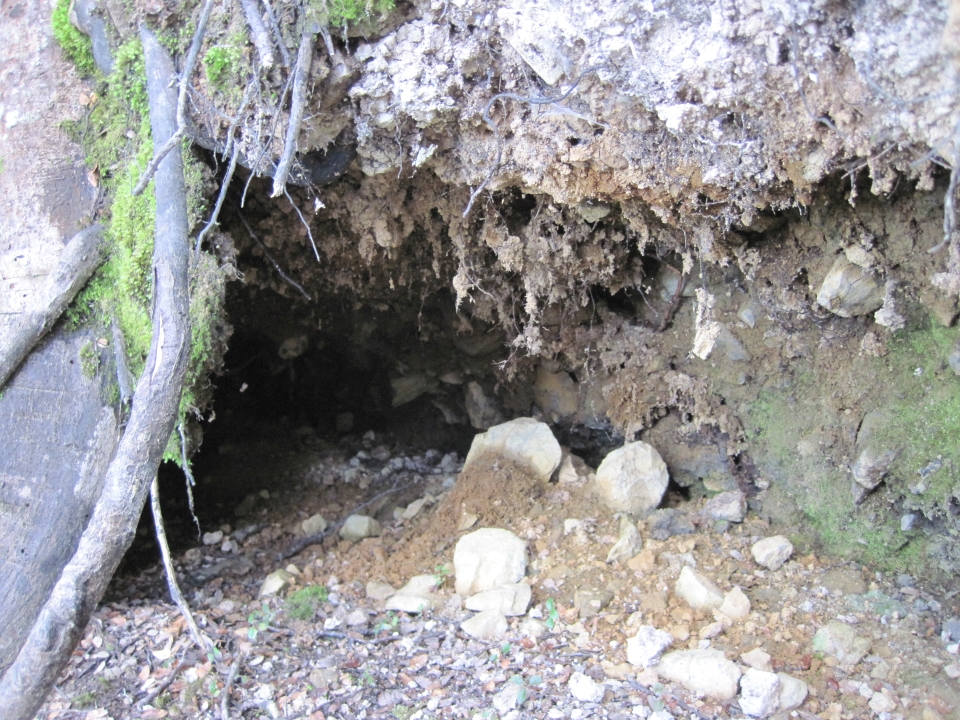
This rocky cavity has been used as a nest before but there were no kea nesting here this year.
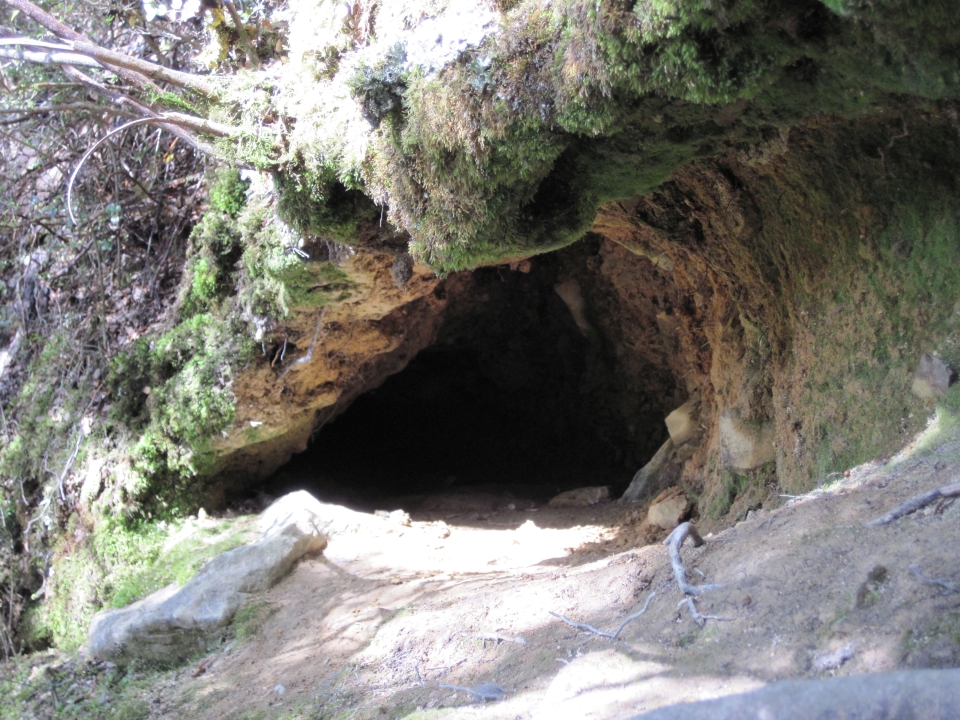
Finally Queen Pow Pow the female kea has been found and she's on a nest!
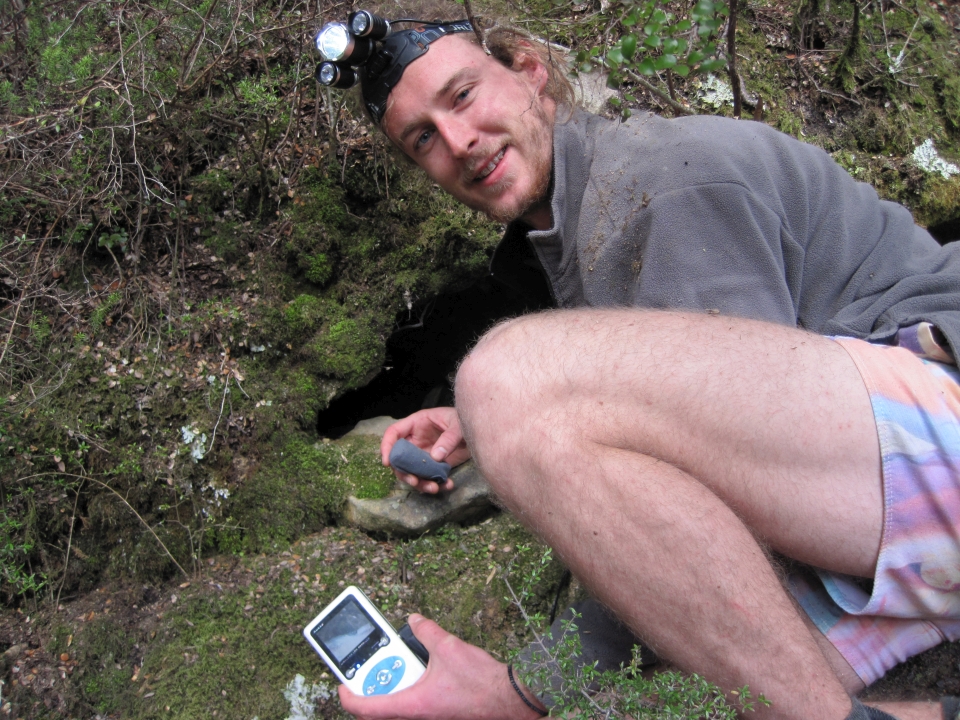
Tom uses a camera called a burrow cam to see inside the nest and count how many eggs there are.
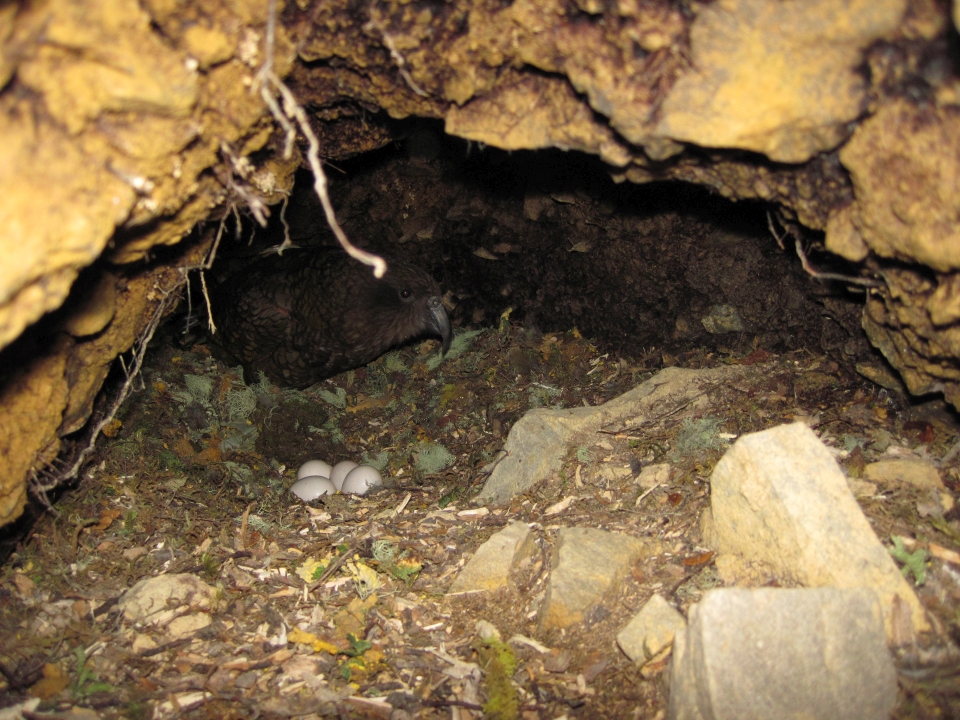
The burrow cam shows Queen Pow Pow with her four eggs. How long does it take for kea eggs to hatch?

This nest monitoring camera is set up to record movement around the nest and predator attacks. How does it work?
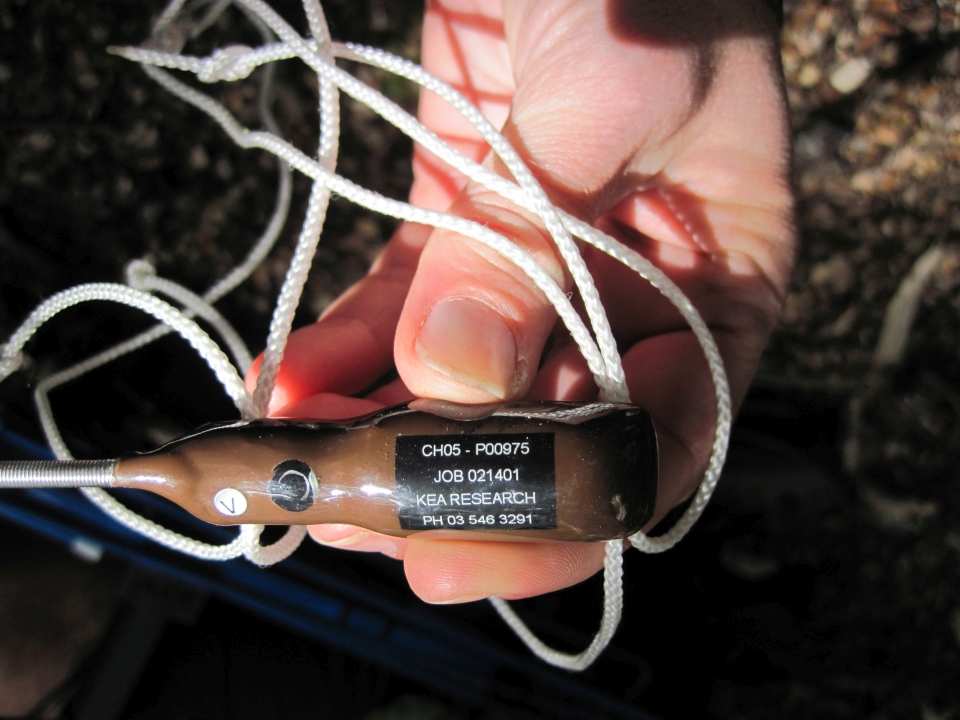
Kea can be fitted with transmitters such as this so they can be tracked. Why is it helpful to be able to track kea?

Students from Karoro School in Greymouth find out about kea while on camp in Arthur's Pass.
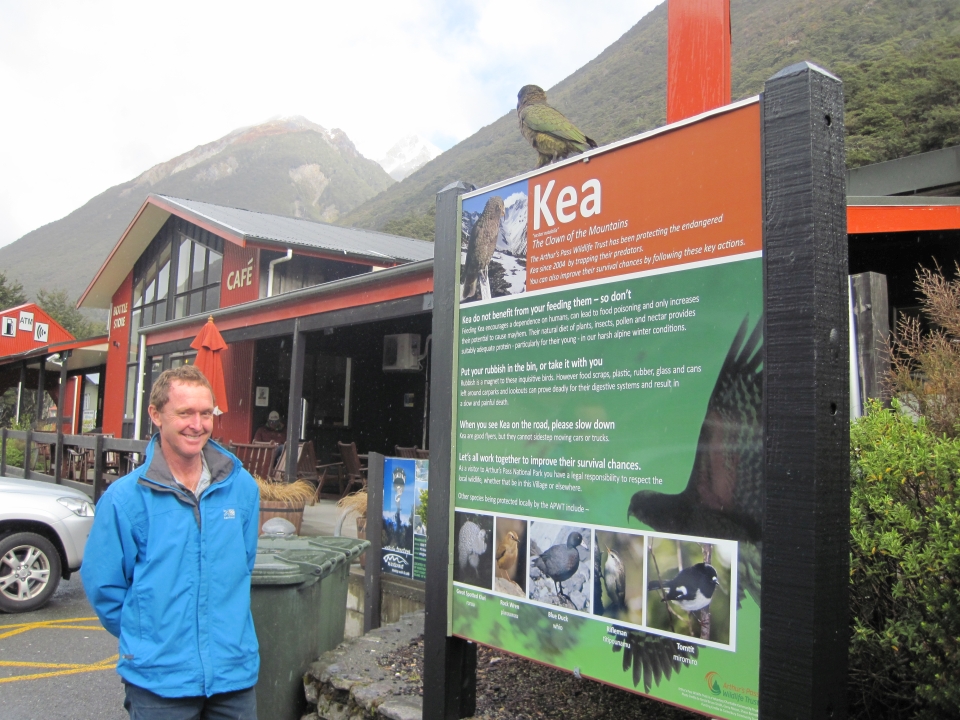
Pete is a local Arthur's Pass resident. With the help of a cheeky kea, he indicates a sign put up to educate people about kea and how to look after them.
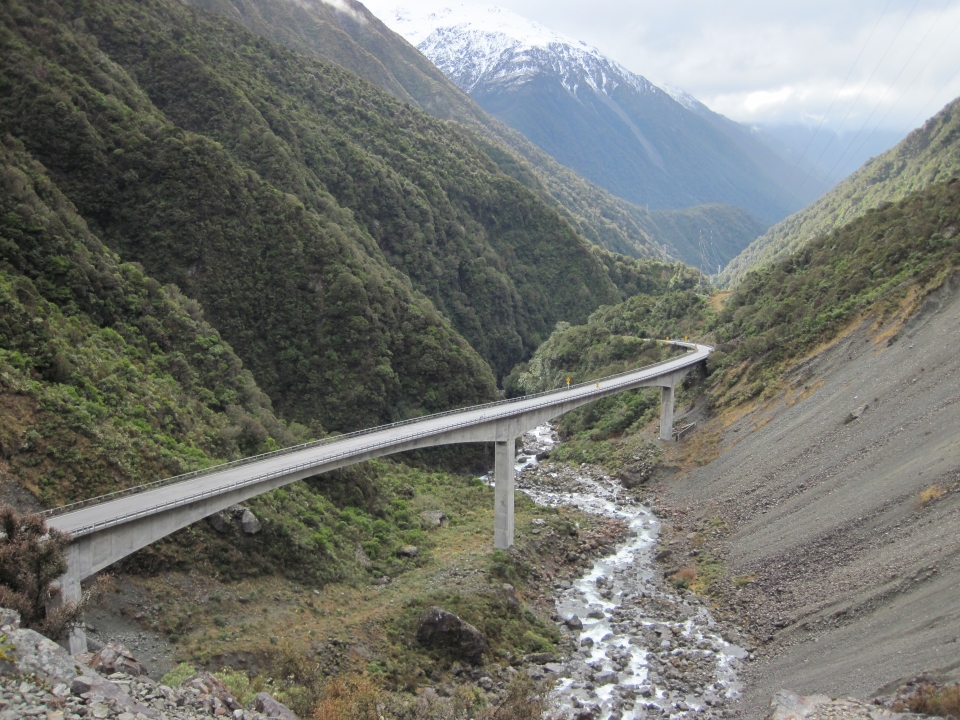
Above Arthur's Pass Viaduct is a lookout where kea are often found.

An adult kea comes to say hello - this kea has been banded. Why are kea banded?
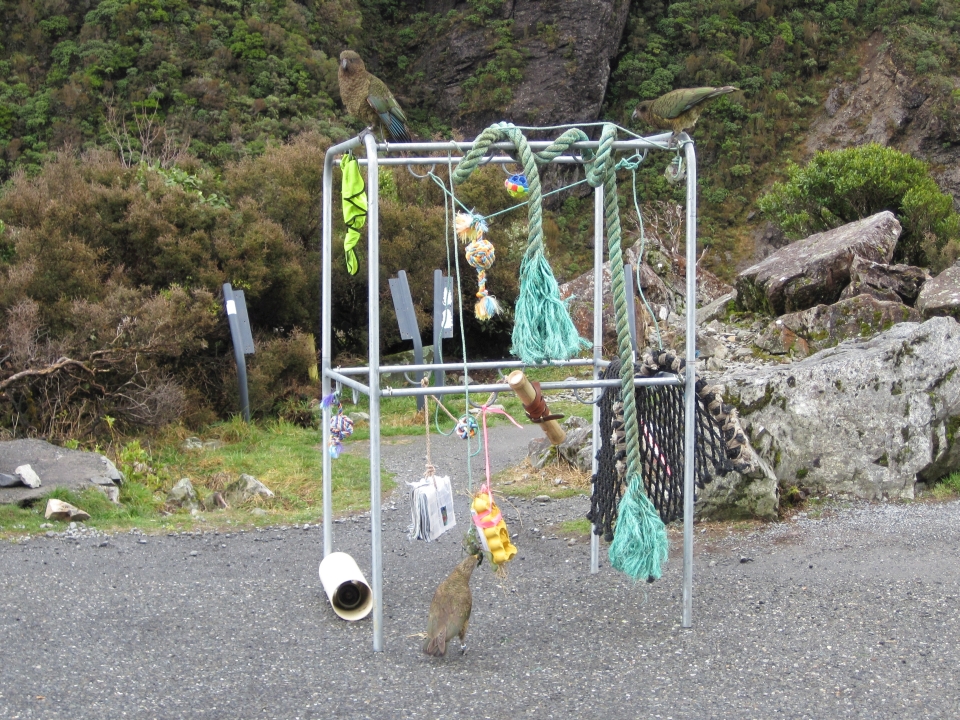
An 'activity frame' is set up to entice curious kea. Why might a frame like this be useful?
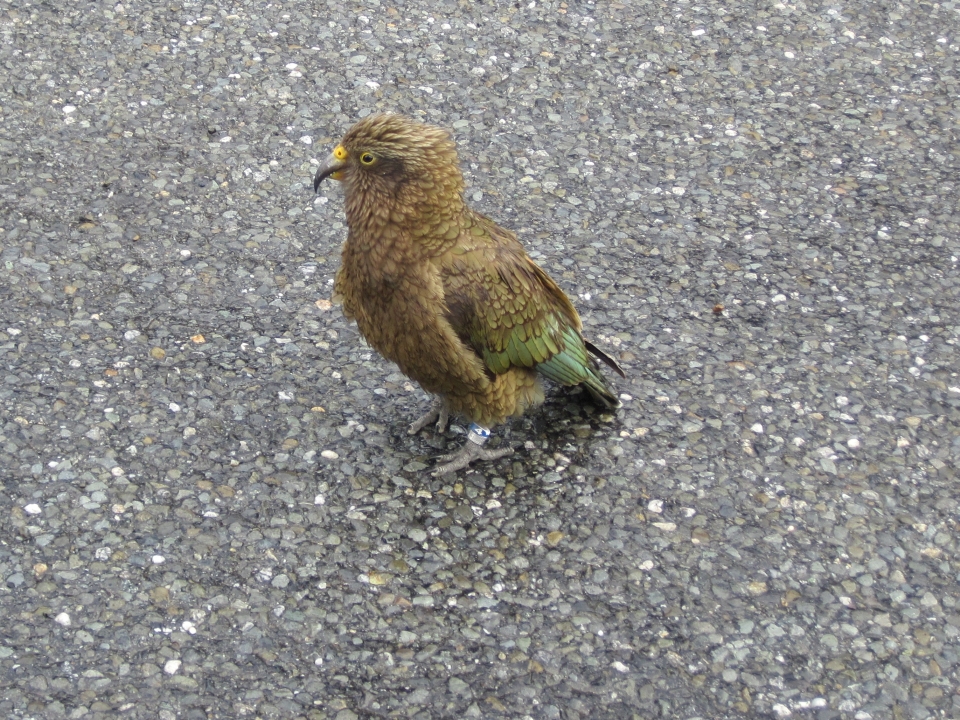
A young kea comes to investigate. This kea has also been banded much more recently. Why do you think the design of the bands has changed?
Reading Diary
Day 1: Drive up to Porter Heights ski field to meet some kea and find out how conflict between kea and people can be managed.
Kia Ora everyone, Shelley here,
You arrived in Arthur’s Pass Village yesterday and have already been lucky enough to see two kea hanging around the café and carpark. But to see more than just a few kea you have to head further afield, in fact a ski field can be a great place to spot kea. We met Tamsin Orr-Walker who is the Chair of the Kea Conservation Trust and she promised that you would see many kea if you headed up to Porter Heights ski field.
Before you could head up into the snow we spoke with Weston School during the formal audioconference where you discovered heaps of interesting things about kea such as how they also used to live in the North Island thousands of years ago during the last ice age. You can listen to the recording of this session to find out more.
A local kea hangout
Following the audioconference and live chat session you quickly packed up ready to go searching for kea. Tom Goodman our Youth Conservationist from the Department of Conservation was also keen to join you on your mission to find kea. You can read Tom's profile and his diary from today to get his perspective.
At this time of year when snow blankets the high country, kea can struggle to find enough food. Over the years kea have learnt that ski fields can provide not only food but hours of entertainment for curious young kea who like to investigate anything new in their environment. Porter Heights ski area is about an hour’s drive from Arthur’s Pass. Many kea have been sighted there recently.
Mischievous kea
As soon as we reached the ski field car park you spotted two kea waddling across the bonnet of a parked car. Then as I looked for my jacket and camera a group of five curious kea appeared from nowhere. They seemed keen to see what was in the back of the car and I’m sure if they had been given half a chance they would have hopped in to have a rummage around. I love watching kea in places like this; they seem to have such fun as they investigate anything shiny or eatable.
The world’s only alpine parrot
Tamsin explained that kea are the world’s only mountain parrot and can easily be recognised by their olive green colour, strong bill and crimson coloured feathers on the underside of their wings. Kea are only found in the South Island and mainly in the mountains unlike their close relative the kaka which lives only in forests. You can find out more about kea habitat in the video.
A history of conflict
Kea are known to be very intelligent and a ski field is an almost irresistible playground for kea. In order for kea to survive in the mountains they have had to be resourceful, curious and experts at finding food. It is this behaviour that has also led to problems for kea. You met Liam Bolitho a field ecologist with the Department of Conservation and he told you how kea numbers have declined dramatically. In the late 1860s the government set up a bounty where people were rewarded for killing kea because they sometimes attacked sheep in the high country. The bounty remained until 1970 and around 150,000 kea were killed. Kea are now fully protected although fewer than 5,000 remain. Unfortunately, kea are still at risk from people who illegally kill them. The Kea Conservation Trust sometimes find kea that have been shot even though anyone caught killing kea can be fined up to $100,000. I was surprised when Liam said that there are now fewer kea than kiwi and it made me realise just how important it is to look after our kea.
What you can do
Luckily young people like yourself have been finding out about how to look after kea. You met five students from Tamariki School in Christchurch and they each had advice about what we can all do to help. It is really important not to feed kea as it can make them sick and attract them to areas where there are people. Kea then become a nuisance as they hang around rubbish bins, damage property and scavenge food. People also need to make sure they don’t leave things lying around that kea can damage. It can be hard to get rid of curious kea but throwing things at them can cause serious harm to kea. A kea was killed at Porter Heights when a child threw a rock at a kea, not expecting it to hit the bird. Kea can also be harmed by cars, especially when they perch on roof-racks and cars speed away. Drivers need to be careful around kea and keep their speed low. Another way people can help kea is by reporting when and how many kea they see when they are out exploring the backcountry. You can record kea sightings on the Kea Conservation Trust website.
Working with kea
You watched kea bite at the rubber on car windscreen wipers and aerials in the car park and try to steal food from plates left outside the café. This may have made you wonder about how the ski field staff feel about kea. Tamsin managed to find Uli the ski field general manager. Uli showed you sign posts that explain to skiers they should not feed kea and he talked about how people can place nets over their cars to protect them when they are away skiing. Uli has also had to think about the equipment he uses. Lead can poison kea so all the lead nails on the lodge roof have been replaced. Uli also had to make sure that the new chairlift was kea proof. All the electrical cables on the lift are covered and no rubber is used. Just imagine what nice rubber seats would look like after a kea had discovered them! Watch the video to find out more.
It has been an interesting day discovering more about kea and their behaviour and hopefully you now know what to do when you venture into kea country so you won't be outsmarted by kea and your actions won’t harm this amazing bird.
Day 2: Walk up the Hawdon Valley to try and find a kea nest and see if there are any new kea chicks.
Kia Ora everyone, Shelley here,
We were on a mission today and there was no time to waste. After an interesting audioconference with St Clair School and Westbrook School you quickly packed up ready to go nest monitoring.
Nest monitoring
Josh Kemp a scientist from DOC in Nelson met up with Liam Bolitho and Tom Goodman to help look for kea on nests in the Hawdon Valley. This valley is known to have several nest sites and kea but this year no eggs have been found there yet. This is a very exciting time of year because it is the breeding season for kea and a kea pair can produce eggs each year. The ambassadors could barely contain their excitement during the half hour drive down to the start of the Hawdon Valley.
Heading up the Hawdon Valley
Once a quick gear check had been completed Josh showed us where you would be heading to search for kea chicks. Luckily technology is able to help with this search as some kea have been fitted with transmitters. These transmitters send out a radio signal that can be tracked. Liam carried a large blue aerial, rather like a TV aeria. He stopped regularly as we walked up the valley to try and hear a signal.
In search of nesting kea
Tom has been monitoring kea nests in this area for about three seasons. He knew there was a nest at the top of one hill close to the start of the valley. There was no signal from this direction so we wandered a little further up the river bed. Suddenly Liam shouted that he had a signal from up valley and it sounded like a kea on a nest. The signal from a kea’s transmitter sounds different if it is moving or stationery. The signal that Liam could hear suggested that this kea was quite still so could be sitting on a nest. Our plan quickly changed as we decided to try and track this signal even though it was further away. The signal was coming from a kea affectionately named ‘Queen Pow Pow’. I wonder how she got this name.
Finding the perfect nest
Several river crossings later we reached the foot of the slope where the signal was coming from and had to head up hill. Beech forest covered the hillside and there was no track to follow so you had to push your way through the undergrowth and climb over old rotting trees. Eventually you reached a rock crevice in which Tom had seen a kea nest previously. A long tunnel lead into a burrow that would be quite a cosy place for a whanau of kea but no one was home. Liam was still receiving a clear signal from further up the hill so after a quick snack we found the energy to keep searching. Before long we came across another nest site but still no Queen Pow Pow in sight.
Tracking down Queen Pow Pow
We carried on up the hill using the GPS to guide us to another well-known nest site. Finally Tom and Josh stopped beside another crevice and looked at Liam. Liam listened to his receiver and a smile spread across his face. “Yep she’s there” he whispered. The signal had given Queen Pow Pow’s location away, which was hard to believe considering she was underground. Tom quietly removed his pack and peered into the hole. His head and shoulders disappeared as he crawled in to get a better look. The nest was a deep burrow and Tom had to use the ‘burrow cam’ which is a camera on a long lead to look further into the nest to see if Queen Pow Pow had laid any eggs. Tom could see two eggs but wanted a better view so he crawled in further. You could see on the screen connected to the burrow cam that there were four eggs. This was fantastic news and everyone was buzzing with excitement. In a few weeks these eggs should hatch and hopefully a new generation of kea will fledge and leave the nest after three months. You can find out more about kea development from the video.
The problem with predators
Liam set up a camera outside the nest. This camera has a motion sensor and will record any movement around the nest. This will show if there are any attacks from predators. Sadly, many kea eggs are taken by predators such as stoats, possums and rats and once eggs hatch the chicks are also vulnerable to attack. Stoats can even kill the mother kea and it is thought that possums and wild cats are also a threat. Queen Pow Pow has a better chance than most kea though because this valley has many stoat traps and has had 1080 poison dropped. Last year only one nest failed while areas that have no predator control have only a few nests that manage to raise chicks. I asked Josh why kea don’t fight back with their strong bills and claws, surely they could fend off a stoat? Josh explained that it is not how kea work. They haven’t learnt to defend themselves from mammals because these predators have only recently been introduced and kea have not had time to adapt. Kea respond to attacks by trying to stay still and unseen. You can find out more in the videos.
Once Liam had finished placing the nest monitoring camera you headed away from the nest to give Queen Pow Pow some peace. This nest site will be revisited in a few weeks to make sure everything is ok. It was such a special moment seeing a kea and her precious eggs and it gave me hope for kea. If we can control predators then we should see an increase in kea numbers in the future.
It was a lot easier heading down hill and we managed to make it back to the car before it started to rain. Tomorrow we are going to see what the Arthur’s Pass Community is doing to help kea.
Day 3: Discover how the Arthur's Pass community are working to help boost kea numbers and find out how you can help.
Kia Ora everyone, Shelley here,
You woke to the sound of a kea hopping around on the roof this morning, followed by a steady patter of rain. Despite the weather everyone was determined to make the most of the last day of the field trip.
An awesome audioconference
You spoke to schools from opposite ends of the country during the audioconference. Christian Renewal School from Whangarei and Remarkables School from Queenstown both had interesting questions to ask Tamsin. I discovered that kea are as smart as a four year old child. I knew that kea weren’t your average ‘bird brains’ but this level of intelligence makes them one of the smartest birds in the world.
The role of the Kea Conservation Trust
Over the past few days you have learnt so much about kea but you probably still have many more questions. There are still a lot of things that we don’t know about kea. The Kea Conservation Trust is working tirelessly to try and answer some important questions such as how many kea remain and why some years they don’t manage to raise chicks. Volunteers help each year by collecting this data which will help make good decisions about how to best look after kea in the future. Population surveys along with people like yourself entering kea sightings online, help to show where kea numbers are stable, increasing or declining. This information can be used to decide where predator control is needed. Educating people about the value of kea and how to look after them is also a focus of the Trust. You can help with this education by sharing what you have learnt on this field trip with others. You could visit the Kea Conservation Trust site to see how to become involved in helping kea.
Karoro School in Arthur’s Pass
As you headed down the main street of Arthur’s Pass you bumped into students from Karoro School in Greymouth. A class of 28 students were all enjoying spending time in the mountains and exploring kea country. Tamsin talked to the class about kea and what they can do to help this endangered bird. After sharing ideas students created kea kites and once the rain had stopped they managed to fly the kea kites outside. You may have heard local kea calling in the distance but no kea came to investigate the kites. You can find out more in the video.
Capturing the curiosity of kea
The Kea Conservation Trust can receive reports of kea being a nuisance and they work hard to come up with solutions that are helpful both to people and kea. One idea that is being trialled at the moment is the use of ‘activity frames’ that attract the attention of kea and act as playgrounds for curious kea. Hopefully, these play areas can draw kea away from areas where they can cause trouble but also provide a place for people to learn about kea and photograph them without feeding them. Tamsin, Liam and Tom set up a frame in Arthur’s Pass Village. A speaker playing kea calls was used to try and attract kea but no birds came to investigate. After more than an hour we decided to take the frame up to a lookout above the Arthur’s Pass Viaduct – a well-known kea hangout. After a while kea came to have a look but were quite weary of this new item in their environment. It shows how complicated and challenging it can be to work with such an intelligent animal. One kea was much more interested in jumping into the back of our car to investigate rather than trying the activity frame.
A community effort
After lunch you spoke to Pete, who manages the Alpine Motels where you have been staying. Pete is also part of the Arthur’s Pass Wildlife Trust. This group of local volunteers set and maintain trap lines in nearby valleys, provide signs to educate the public on native animals and not feeding kea. They are hoping to remove lead nail heads from local house roofs. Pete explained that it is hard work but it has brought the community together and provided a lot of personal satisfaction. You can watch the video to find out more.
The rain set in again and you headed back indoors to reflect on a fantastic field trip. After finding out so much about our loveable alpine parrot I am keen to join the Kea Conservation Trust and do some voluntary work; what could you do to help?
It certainly has been an action packed few days here in kea country. I hope you have enjoyed it as much as I have.
See you on another trip soon,
Shelley the LEARNZ Field Trip Teacher



